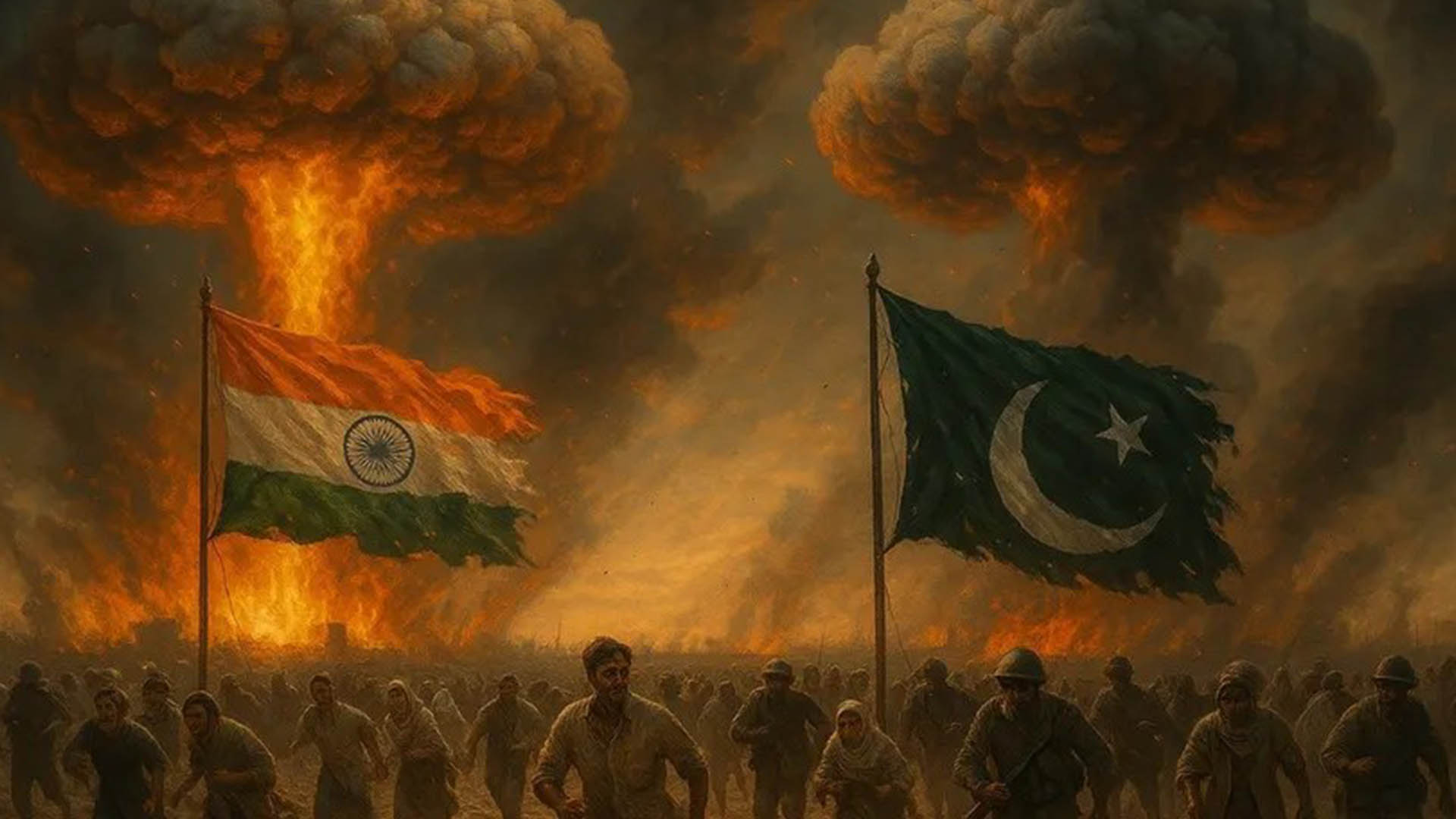Can South Asia avoid another war as India, Pakistan trade blows?

MG News | May 08, 2025 at 03:26 PM GMT+05:00
May 08, 2025 (MLN): Tensions between nuclear-armed neighbors India and Pakistan surged further on May 8, marking the second consecutive day of conflict, following a deadly exchange of missile strikes and drone attacks.
With both sides engaging in increasingly aggressive military actions, the region faces heightened fears of a full-scale war, making the question of whether South Asia can avert further escalation more pressing than ever.
India’s Defense Ministry confirmed on Thursday that its armed forces targeted air defense radars and systems at multiple locations inside Pakistan.
This offensive followed Pakistan’s strikes a day earlier, during which military targets across 15 Indian cities including Srinagar, Jammu, Amritsar, Ludhiana, Chandigarh, and Bhuj were attacked.
In response, Pakistan’s military reported it had shot down 25 Indian drones, many of them Israeli-made Harop loitering munitions.
One drone damaged a military site near Lahore, wounding four soldiers; another fell in Rawalpindi, as Reuters reported.
Debris from downed drones also killed a civilian and injured another in Sindh province, while other drones crashed in Chakwal district and near Walton Airport, a sensitive area in Lahore.
This military escalation was triggered by a recent terror attack in Indian-administered Kashmir, where 26 Hindu pilgrims were killed by gunmen. India accused Pakistan of backing the militants a claim Pakistan firmly denies.
The current flare-up is the worst since the 2019 Pulwama-Balakot crisis, bringing the two nuclear-armed neighbors dangerously close to renewed large-scale conflict.
Civilian casualties are mounting. Pakistani officials reported that 31 civilians, including women and children, were killed in Indian strikes on May 7. India claimed that 13 civilians and one soldier were killed and 59 others wounded by Pakistani fire.
Over the past 24 hours, six more deaths have been reported on the Pakistani side of the heavily militarized frontier.
The humanitarian toll continues to grow. Thousands have fled villages near the Line of Control. In Pakistan-administered Kashmir, about 2,000 people have been displaced.
On the Indian side, tens of thousands spent the night in emergency shelters as security forces ramped up evacuations near the border.
Airspace across the region has been disrupted. Pakistan suspended flights at major airports Islamabad, Karachi, Lahore, and Sialkot.
In India, more than two dozen airports in the north and west halted operations, according to airline advisories.
The escalating geopolitical crisis between India and Pakistan triggered sharp reactions across Indian financial markets.
The NSE Nifty 50 Index dropped by 0.7%, marking its steepest decline since April 25, with HDFC Bank falling 0.9% and significantly contributing to the index’s slide.
The Indian rupee weakened notably, reaching 85.59 against the U.S. dollar, while yields on 10-year government bonds surged over 7 basis points to 6.38%, reflecting heightened investor caution.
Simultaneously, market volatility spiked, with the Nifty Volatility Index rising to 21.48 its highest level since April 9 signaling increased uncertainty among traders and investors.
“This is a knee-jerk reaction from the markets, just as we had expected due to escalation of border tensions,” said Sandeep Bagla, CEO at Trust Mutual Fund.
Meanwhile, China’s defense stocks rallied for a second consecutive day amid speculation that Pakistan used Chinese-made PL-15 air-to-air missiles possibly launched from J-10 or JF-17 fighter jets to shoot down up to five Indian aircraft, including French-built Rafales.
Although unconfirmed, the reports significantly boosted investor sentiment.
AVIC Chengdu Aircraft, the manufacturer of the J-10C jet, hit its 20% daily price limit, while shares of Aerospace Nanhu Electronics and AviChina Technology also climbed sharply.
As a result, the CSI Defense Index surged as much as 5.6%, reflecting growing optimism around China’s military-industrial capabilities.
As both nations harden their positions with Pakistan vowing retaliation and India signaling continued military resolve the region teeters on the edge of deeper conflict.
With nuclear capabilities on both sides and no signs of immediate de-escalation, global attention remains fixed on South Asia, watching anxiously for what may come next.
Copyright Mettis Link News
Related News
| Name | Price/Vol | %Chg/NChg |
|---|---|---|
| KSE100 | 134,299.77 290.06M |
0.39% 517.42 |
| ALLSHR | 84,018.16 764.12M |
0.48% 402.35 |
| KSE30 | 40,814.29 132.59M |
0.33% 132.52 |
| KMI30 | 192,589.16 116.24M |
0.49% 948.28 |
| KMIALLSHR | 56,072.25 387.69M |
0.32% 180.74 |
| BKTi | 36,971.75 19.46M |
-0.05% -16.94 |
| OGTi | 28,240.28 6.19M |
0.21% 58.78 |
| Symbol | Bid/Ask | High/Low |
|---|
| Name | Last | High/Low | Chg/%Chg |
|---|---|---|---|
| BITCOIN FUTURES | 118,140.00 | 119,450.00 115,635.00 |
4270.00 3.75% |
| BRENT CRUDE | 70.63 | 70.71 68.55 |
1.99 2.90% |
| RICHARDS BAY COAL MONTHLY | 97.50 | 0.00 0.00 |
1.10 1.14% |
| ROTTERDAM COAL MONTHLY | 108.75 | 108.75 108.75 |
0.40 0.37% |
| USD RBD PALM OLEIN | 998.50 | 998.50 998.50 |
0.00 0.00% |
| CRUDE OIL - WTI | 68.75 | 68.77 66.50 |
2.18 3.27% |
| SUGAR #11 WORLD | 16.56 | 16.60 16.20 |
0.30 1.85% |
Chart of the Day
Latest News
Top 5 things to watch in this week
Pakistan Stock Movers
| Name | Last | Chg/%Chg |
|---|
| Name | Last | Chg/%Chg |
|---|




 MTB Auction
MTB Auction